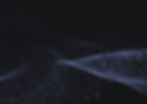
Beauty and the Byte
Digital Fabrication as a solution to the standardization of architecture
Foreword
Welcome to Beauty and the Byte, a wandering through the landscape of digital fabrication viewed through the lens of architecture. This is a web-based exploration of the use of digital fabrication in the architecture, engineering, and construction industry. The project was carried out in the fall of 2022 as the final work of the architecture master’s program at NTNU. My journey as an architecture student has taken a more technical path than most, but I hope that my enthusiasm about the field will reach through to you and that you will learn something new along the way.
This website is designed to be read on a computer. While it is possible to read on mobile formats, it is not optimal, so using a computer is highly recommended. External content like some videos or links to other websites is provided for reference and as an easy way for the reader to access more information. This should be considered secondary to the thesis and are subject to the original hosts availability.
To navigate between the different areas of the project, either use the menu at the top left, or use the buttons at the bottom of each page. Media and images can be enlarged by clicking on them. Be sure to scroll all the way through each page to access the entirety of the content.
Executive Summary
Critique of contemporary architecture
Contemporary architecture is often criticized for being uninspired, monotonous, and bland. Mid-rise residential projects are especially prone to negative feedback. These projects are created on tight budgets due to developers working with small margins or pursuing maximum return on investment. The method of production used in industrial residential construction gives limited options the architects can work with when it comes to creating aesthetically pleasing architecture.
Digital fabrication
Digital fabrication is a method of producing physical objects from digital files using computer-controlled machines. It allows for efficiently producing complex geometry at low cost. While digital fabrication has been widely adopted in other industries, the architecture, engineering, and construction industry is lagging behind. Various real-world examples were highlighted to explore what we are currently able to achieve through the application of digital fabrication.
Examining a case
To examine the potential for digital fabrication methods in industrial residential construction, a case was identified in the Thurmannskogen project. Several architects working on Thurmannskogen were interviewed to identify pain points that caused the project to not reach its full aesthetic potential.
Interventions at different scales
Five interventions were created to explore possible ways digital fabrication could contribute to making the project more interesting. Concepts were sketched in virtual reality and further developed using generative text-to-image artificial intelligence models. The various concepts were done at different scales, ranging from a single detail to an entire block, to examine the result of different levels of digital fabrication involvement.
Future Work
Going forward, digital fabrication should be tested at a larger scale through commercial projects. Assessing the current level of digital competency in the industry will highlight whether the workforce is able to adopt the digital fabrication workflow or whether specialists or further training is necessary. Due to the flexible nature of digital fabrication, aesthetic upgrades can be performed at various scales to improve the well-being of users.

Acknowledgements
As the time I have spent studying architecture is coming to its conclusion, I would like to extend my gratitude to the people who have been important on my journey.
First and foremost, I want to thank some of most impactful figures at NTNU. I am thankful to Pasi Aalto for fostering a great environment for digital fabrication at NTNU. Without his efforts, I would not have been able to pursue my fascination within this field. I would like to thank Professor Branko Mitrovic for sparking incredibly interesting conversations with his views and deep expertise in aesthetics. I am also very grateful for my supervisor, Jørgen Hallås Skatland, for all the interesting discussions during the course of this thesis, as well as for the guidance, reeling me in when I went too far in odd directions.
Secondly, I would like to thank LOF Arkitekter and the architects at the firm for discussing the Thurmannskogen project with me, providing me with substantial material to work with.
I want to thank my good friend Hugo Nilsen for the numerous inspiring discussions and useful feedback he has provided on the project. I also want to give a shout-out to my friend and colleague Sondre.
I am very grateful for the support I have gotten from my partner, Shantala. Thank you for listening patiently to my long rants, even though they were out of your field, as well as for all the feedback on my writing.
Finally, I want to express my gratitude towards my family, my parents and my brothers, for their unwavering support throughout the years.
- A. B. L.
